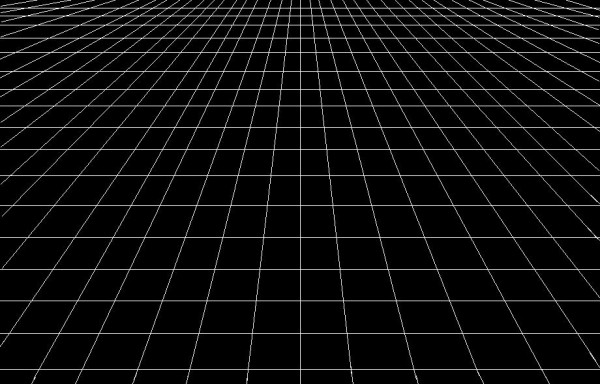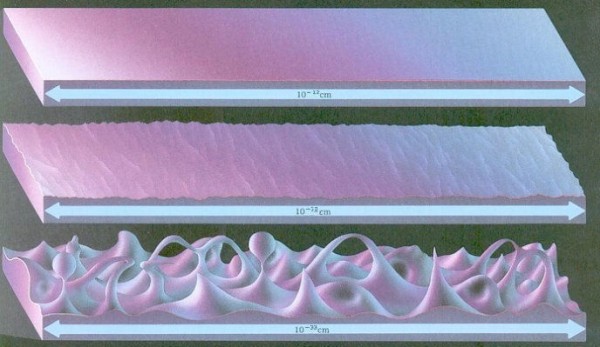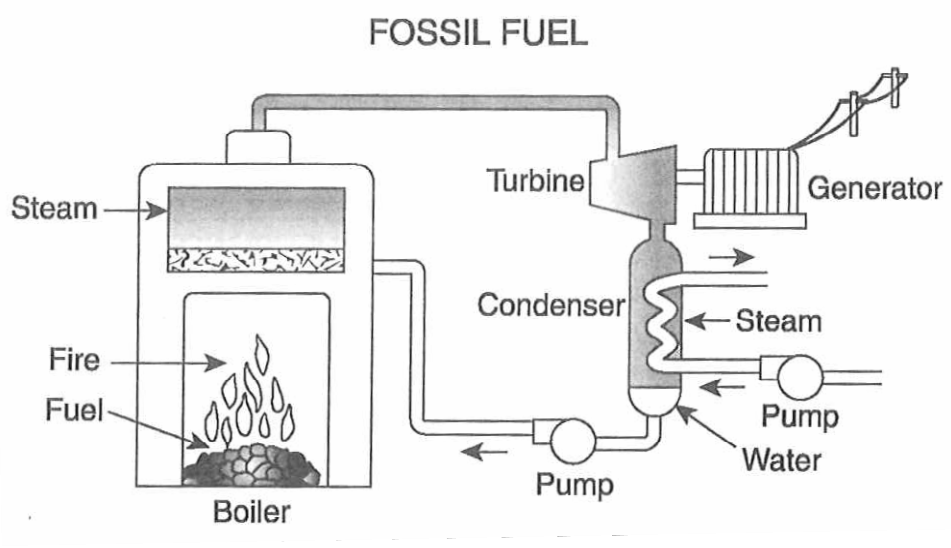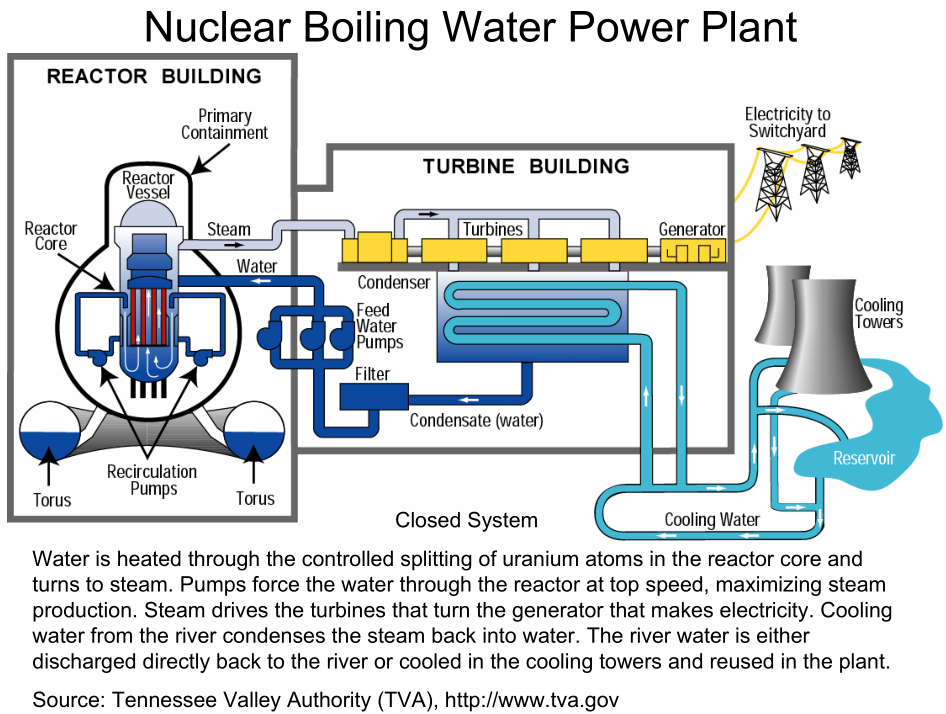It looks like you're using an Ad Blocker.
Please white-list or disable AboveTopSecret.com in your ad-blocking tool.
Thank you.
Some features of ATS will be disabled while you continue to use an ad-blocker.
share:
a reply to: dragonridr
well.. I will use "your sources"
Deep inelastic scattering is based as you know on Rutherford scattering... ( planets like system of electron-proton and so on ) but much higher velocities... momentum, agree ??
Heisenberg's Uncertainty principle however tells you, the bigger the momentum the less accuracy in position...
same questions again, ...how many electrons used on scattering on how many nuclei ??
ONE on ONE ???
NO!
what you read is not exactly "looking into" an proton, it's much more "looking on matter interaction in the course of electron bombardment..."
but as always, it's just my opinion
please stop or read my preview post some pages back,
I'm not a proponent of EU in 100%
I've said, it makes more sense to me in some cases as the particle zoo or QM twelve dimension Universe.
I'm on my own way
Now we can call them anything we like and in fact they may be part of something else but they do exist. This was proved through deep inelastic electron protron scattering. This allowed us to was see inside baryons. This was done at first using electrons. It showed us there is internal structure as it deflected off of them.n , there are three distinct points of deflection ( this is why we named them quarks and as we know there are three quarksin baryonic matter ).
well.. I will use "your sources"
Deep inelastic scattering is based as you know on Rutherford scattering... ( planets like system of electron-proton and so on ) but much higher velocities... momentum, agree ??
Heisenberg's Uncertainty principle however tells you, the bigger the momentum the less accuracy in position...
same questions again, ...how many electrons used on scattering on how many nuclei ??
ONE on ONE ???
NO!
what you read is not exactly "looking into" an proton, it's much more "looking on matter interaction in the course of electron bombardment..."
but as always, it's just my opinion
In the case of electric universe the experiments already invalidated the theory. Attacking science isn't going to change that. We have experimental evidence proving the atomic model and evidence that disproves the electric sun. That was truly hard we could tell almost immediately it was wrong but on the early 1900s they were fascinated with electricity. Before you attempt to attack science I think you need to understand it. We are well aware of where we have problems but sadly it's not in the areas you believe.
please stop or read my preview post some pages back,
I'm not a proponent of EU in 100%
I've said, it makes more sense to me in some cases as the particle zoo or QM twelve dimension Universe.
I'm on my own way
edit on 12-9-2015 by KrzYma because: (no reason given)
a reply to: KrzYma
Your misunderstanding thehe Heisenberg Uncertainty Principle it states that you can never simultaneously know the exact position and the exact speed of an object.you have apparently made some strange correlation that in no way changes the results of electron scattering.
But don't worry this confuses a lot of people they think it means the a t of measurement changes the object. It's actually much more astonishing it tells us everything in the universe can act like a wave or particle at the same time. So as I said your misunderstanding what it tells us and applying it to something as proof something can't be measured. Yes we can make measurements, This is the biggest problem with science people use dubious sources that don't understand the science and false interpretations are everywhere.
Your misunderstanding thehe Heisenberg Uncertainty Principle it states that you can never simultaneously know the exact position and the exact speed of an object.you have apparently made some strange correlation that in no way changes the results of electron scattering.
But don't worry this confuses a lot of people they think it means the a t of measurement changes the object. It's actually much more astonishing it tells us everything in the universe can act like a wave or particle at the same time. So as I said your misunderstanding what it tells us and applying it to something as proof something can't be measured. Yes we can make measurements, This is the biggest problem with science people use dubious sources that don't understand the science and false interpretations are everywhere.
a reply to: Hyperia
It is exactly splitting atoms, not just 'like' it. And truthfully, it's not terribly advanced if you consider the means by which it's accomplished. The nuclear fuel for the detonation is compressed to critical mass (the point at which the reaction occurs) by conventional explosives. Well, in the most basic form of an atomic bomb, anyhow.
Other forms, such a the thermonuclear (hydrogen) bomb employ several stages to boost the reaction further with neutron 'doping', or utilizing elements which readily shed neutrons under certain conditions to enhance the nuclear reaction.
It is exactly splitting atoms, not just 'like' it. And truthfully, it's not terribly advanced if you consider the means by which it's accomplished. The nuclear fuel for the detonation is compressed to critical mass (the point at which the reaction occurs) by conventional explosives. Well, in the most basic form of an atomic bomb, anyhow.
Other forms, such a the thermonuclear (hydrogen) bomb employ several stages to boost the reaction further with neutron 'doping', or utilizing elements which readily shed neutrons under certain conditions to enhance the nuclear reaction.
That's not what it says.
originally posted by: KrzYma
Heisenberg's Uncertainty principle however tells you, the bigger the momentum the less accuracy in position...
It says the more accurately we try to measure the momentum, the less accurately we can measure or know the position.
In quantum mechanics, the uncertainty principle...is...asserting a fundamental limit to the precision with which certain pairs of physical properties of a particle, known as complementary variables, such as position x and momentum p, can be known simultaneously.
If we don't try to measure the momentum at all, the principle doesn't prevent us from measuring the position accurately. It doesn't say that large momentum makes position measurements inaccurate as you suggest.
Every time I thought I've discovered a flaw in mainstream science, and investigated it further, I discovered that the flaw was in my understanding of it. This is a perfect example of the same thing happening with you.
Now this doesn't mean mainstream science is flawless, it no doubt has problems but as dragonridr said they aren't the problems you're raising, which are problems with your understanding.
Ever hear of the Fukushima disaster? Chernobyl? They were splitting atoms to produce electric power.
originally posted by: Hyperia
a reply to: pfishy
Is there any other thing/area than a Nuke, where splitting atoms is used in? Or is it just explosives?
Another interesting story is that a radioactive element called radium-226 would spontaneously decay or "split" by itself, and would help you read your watch or clock in the dark. Women would paint radium paint on to watch and clock faces in the early 1900s when they didn't know the dangers of radium. An old man showed me watch with radium dots on it, and then he showed me a lump on his wrist which appeared to be a cyst and asked me if I thought it might me related to the radium on his watch. I told him I couldn't be sure, but I wouldn't rule it out.
The women who worked with the radium paint got radium-induced osteonecrosis from doing that work and sued the company they worked for. They were licking the tips of their paintbrushes to get then pointy, and ingested radium in the process. They stopped licking their paintbrushes by 1950 but I don't know when they stopped using radium if they did. Usually modern watches use phosphorescent light sources which don't work by radioactive decay like radium-226.
The old radium dials often don't light up anymore due to degradation of the zinc sulfide but the radium-226 has a half-life of 1600 years so I wouldn't recommend wearing any old radium antique watches even if the radium paint doesn't glow in the dark anymore...it's still radioactive and the atoms are still splitting spontaneously and will be for thousands of years.
Smoke detectors still use a tiny radioactive source, but as long as you don't open them up and swallow the radioactive source, they are perfectly safe.
edit on 2015912 by Arbitrageur because: clarification
@OP I'm curious about the concept of "nothing" in physics too. I read through the recent discussion with ImaFungi.
Here's an excerpt from an article which describes the possibility of "nothing":




Article link: scienceblogs.com...
My question is this: given the fact that the quantum vacuum spontaneously creates pairs of particles and antiparticles, isn't the entire concept of "nothing" a moot point? How can "nothing" even be considered a reality anywhere in the universe when a quantum vacuum wouldn't allow it (not sure I'm using the right terminology)?
If that's the case, it would seem to be an impossibility because even two particles exert gravitational force on each other. And if they are created and annihilated randomly, a "nothing" state should be impossible.
At the end of the article he says:
The whole thing seems to be fraught with contradictions. Where did I go wrong?
Here's an excerpt from an article which describes the possibility of "nothing":
And so we try to answer it scientifically. In order to do that, we want to start with a scientific definition of nothing. In our nearby Universe, nothing is hard to come by. We are surrounded by matter, radiation, and energy everywhere we look. Even if we blocked it all out — creating a perfect, cold, isolated vacuum — we still wouldn’t have nothing.

We would still exist in curved spacetime. The very presence of nearby objects with mass or energy distorts the very fabric of the Universe, meaning that if we want to truly achieve a state of physical nothingness, we cannot have anything in our Universe at all.
Physically, that ideal case would be true nothingness. No matter, no radiation, no energy, no spatial curvature. We can imagine existing in completely empty, void space, infinitely far away from the nearest star, galaxy, atom or photon. The spacetime around us, rather than having curvature to it, would appear as completely flat.

The only physical freedom that such nothingness could have is the freedom to expand or contract, depending on the nature of this nothingness.
Yet it is a form of this very nothingness that I have just imagined with you that — to the best of our scientific knowledge — the entire Universe is born from, and that it will return to in the distant future. Here's How:

You removed all the matter, energy, and sources of curvature from your Universe. You are left with empty spacetime. On large scales — where “large” means larger than the size of a subatomic particle like a proton — spacetime indeed looks like that flat grid we referred to earlier. But if you start looking at ever smaller scales, this picture breaks down.
On the tiniest physical scales — the Planck scale — spacetime isn’t flat at all. Empty space itself vibrates and curves, and there is a fundamental uncertainty in the energy content — at any given time — of nothingness.

This quantum vacuum — on these very small scales — manifests this fundamental uncertainty by spontaneously creating pairs of particles-and-antiparticles for very brief amounts of time. Everywhere. All the time. Even in empty space..
Article link: scienceblogs.com...
My question is this: given the fact that the quantum vacuum spontaneously creates pairs of particles and antiparticles, isn't the entire concept of "nothing" a moot point? How can "nothing" even be considered a reality anywhere in the universe when a quantum vacuum wouldn't allow it (not sure I'm using the right terminology)?
If that's the case, it would seem to be an impossibility because even two particles exert gravitational force on each other. And if they are created and annihilated randomly, a "nothing" state should be impossible.
At the end of the article he says:
This entire Universe came from one form of nothing, this entire Universe will eventually return to a slightly different form of nothing, and despite the paradoxical nature of this, here it all is.
The whole thing seems to be fraught with contradictions. Where did I go wrong?
In some of them yes, but what makes the steam? In a coal plant it's burning coal and in a nuclear plant it's splitting atoms.
originally posted by: Hyperia
a reply to: Arbitrageur
But isnt it actually steam? In a nuclear power plant?
The discussion with imafungi was convoluted but in summary I think he was objecting to the mainstream model of the metric expansion of space between galaxies, and he kept insisting that space was "nothing" and that "nothing" can't expand. I tried to avoid calling it "nothing" for reasons your research confirms:
originally posted by: Phantom423
@OP I'm curious about the concept of "nothing" in physics too. I read through the recent discussion with ImaFungi.
It seems to me like you answered your own question, because as we like to say, empty space isn't really empty. Even if you remove all the baryonic matter, it's still not empty.
My question is this: given the fact that the quantum vacuum spontaneously creates pairs of particles and antiparticles, isn't the entire concept of "nothing" a moot point? How can "nothing" even be considered a reality anywhere in the universe when a quantum vacuum wouldn't allow it (not sure I'm using the right terminology)?
That conclusion from your source is a little bit of a leap, since there are still lots of things we don't know like the exact state of things before the big bang, and the exact fate of the universe. I'm not sure if we CAN know what caused the big bang.
This entire Universe came from one form of nothing, this entire Universe will eventually return to a slightly different form of nothing, and despite the paradoxical nature of this, here it all is.
If you're a little puzzled by the vacuum, join the club as it's not well-understood. Our model of the vacuum doesn't predict the observed amount of vacuum energy which is an unsolved problem in physics. That's the big contradiction I know of, but if there are others you'll have to elaborate about what you think they are.
If I have to guess about another apparent contradiction it's that how can we have apparently "something" here if it came from "nothing". Imafungi objects to that use of the word "nothing" and perhaps he has a point, a quantum fluctuation is not "nothing", it's a quantum fluctuation. In the Zero-energy universe theory:
I'm not sure if that theory is true but if it is it might explain a lot.
the total amount of energy in the universe is exactly zero: its amount of positive energy in the form of matter is exactly canceled out by its negative energy in the form of gravity.
Nice post by the way, I like the images.
a reply to: Arbitrageur
Its a chainreaction leading up to water steam, sorry for the question, a nuclear power plant is actually a steamplant, with natural chainreactions?
Its a chainreaction leading up to water steam, sorry for the question, a nuclear power plant is actually a steamplant, with natural chainreactions?
The chain reactions in nuclear power plants are man-made, not natural. However there were naturally occurring chain reactions in the Oklo natural nuclear reactor.
originally posted by: Hyperia
a reply to: Arbitrageur
Its a chainreaction leading up to water steam, sorry for the question, a nuclear power plant is actually a steamplant, with natural chainreactions?
Whether you burn coal, or split atoms, both cases produce heat and it's that heat that's used to boil the water, at least in boiling water nuclear reactor designs. There are other nuclear reactor designs which use things other than boiling water, but I think boiling water reactors are the most common design. Here's a comparison of coal versus nuclear schematics:
www.engineering.olemiss.edu/~eke/Nuclear/PowerPlantTypes.pdf
Coal or other fossil fuel:

Nuclear, boiling water type:

a reply to: Arbitrageur
Could you just explain this?
The chain reactions in nuclear power plants are man-made, not natural.
Could you just explain this?
a reply to: Hyperia
The reason the Oklo natural nuclear reactor is the only one of its kind is because it takes a unique set of circumstances for chain reactions to occur naturally. You need to have a high enough concentration of fissile material and a neutron moderator.
So the way man makes man made nuclear reactions is by addressing those two key things, taking low levels of naturally occurring radioactive substances, and concentrating them, and then using moderators (usually in the form of control rods) to moderate the chain reaction. If it's not moderated properly you get Chernobyl.
The reason the Oklo natural nuclear reactor is the only one of its kind is because it takes a unique set of circumstances for chain reactions to occur naturally. You need to have a high enough concentration of fissile material and a neutron moderator.
So the way man makes man made nuclear reactions is by addressing those two key things, taking low levels of naturally occurring radioactive substances, and concentrating them, and then using moderators (usually in the form of control rods) to moderate the chain reaction. If it's not moderated properly you get Chernobyl.
originally posted by: [post=19803234]KrzYma
please stop or read my preview post some pages back,
I'm not a proponent of EU in 100%
I've said, it makes more sense to me in some cases as the particle zoo or QM twelve dimension Universe.
I'm on my own way
EU with a little twist to it is kind of relevant, if you consider dark matter to be nothing more than electrons in the time domain
a reply to: Hyperia
The current generation of nuclear reactors rely on heat produced by the fuel rods interacting with each other. This heat is directly absorbed by the 'hot' (radioactive) cooling water, and leached off via heat exchangers to a non-radioactive cooling water system. The secondary cooling system uses the leached heat to produce high-pressure steam which is used to drive the turbine generator system.
There are actual way of direct generation via fusion technology, but these are still in their infancy, at best. But instead of using heat to drive turbines, they actually cause a direct charge differential in electrical pickups, via particle emission. There is a recent thread about this exact topic, using a hydrogen-boron fusion reaction (I think, it could be a different second element.)
I will look for it again and post the thread link if I can find it.
The current generation of nuclear reactors rely on heat produced by the fuel rods interacting with each other. This heat is directly absorbed by the 'hot' (radioactive) cooling water, and leached off via heat exchangers to a non-radioactive cooling water system. The secondary cooling system uses the leached heat to produce high-pressure steam which is used to drive the turbine generator system.
There are actual way of direct generation via fusion technology, but these are still in their infancy, at best. But instead of using heat to drive turbines, they actually cause a direct charge differential in electrical pickups, via particle emission. There is a recent thread about this exact topic, using a hydrogen-boron fusion reaction (I think, it could be a different second element.)
I will look for it again and post the thread link if I can find it.
edit on 12-9-2015 by pfishy because: (no reason given)
a reply to: Hyperia
We've made experimental fusion reactors that work, but there are engineering and efficiency issues so they aren't yet commercially viable. Lockeed Martin claims to be close to having a compact fusion reactor but time will tell what they really have.
We've made experimental fusion reactors that work, but there are engineering and efficiency issues so they aren't yet commercially viable. Lockeed Martin claims to be close to having a compact fusion reactor but time will tell what they really have.
new topics
-
Should Biden Replace Harris With AOC On the 2024 Democrat Ticket?
2024 Elections: 10 minutes ago -
Intro once again
Introductions: 1 hours ago -
University student disciplined after saying veganism is wrong and gender fluidity is stupid
Education and Media: 2 hours ago -
Geddy Lee in Conversation with Alex Lifeson - My Effin’ Life
People: 3 hours ago -
God lived as a Devil Dog.
Short Stories: 4 hours ago -
Police clash with St George’s Day protesters at central London rally
Social Issues and Civil Unrest: 5 hours ago -
TLDR post about ATS and why I love it and hope we all stay together somewhere
General Chit Chat: 6 hours ago -
Hate makes for strange bedfellows
US Political Madness: 8 hours ago -
Who guards the guards
US Political Madness: 11 hours ago
top topics
-
Hate makes for strange bedfellows
US Political Madness: 8 hours ago, 16 flags -
Who guards the guards
US Political Madness: 11 hours ago, 13 flags -
Police clash with St George’s Day protesters at central London rally
Social Issues and Civil Unrest: 5 hours ago, 8 flags -
TLDR post about ATS and why I love it and hope we all stay together somewhere
General Chit Chat: 6 hours ago, 5 flags -
University student disciplined after saying veganism is wrong and gender fluidity is stupid
Education and Media: 2 hours ago, 5 flags -
Has Tesla manipulated data logs to cover up auto pilot crash?
Automotive Discussion: 13 hours ago, 2 flags -
Intro once again
Introductions: 1 hours ago, 2 flags -
Geddy Lee in Conversation with Alex Lifeson - My Effin’ Life
People: 3 hours ago, 2 flags -
God lived as a Devil Dog.
Short Stories: 4 hours ago, 2 flags -
Should Biden Replace Harris With AOC On the 2024 Democrat Ticket?
2024 Elections: 10 minutes ago, 1 flags
active topics
-
"We're All Hamas" Heard at Columbia University Protests
Social Issues and Civil Unrest • 253 • : YourFaceAgain -
University student disciplined after saying veganism is wrong and gender fluidity is stupid
Education and Media • 14 • : ImagoDei -
Mood Music Part VI
Music • 3092 • : TheWoker -
Hate makes for strange bedfellows
US Political Madness • 35 • : Degradation33 -
Should Biden Replace Harris With AOC On the 2024 Democrat Ticket?
2024 Elections • 2 • : FlyersFan -
Europe declares war on Russia?
World War Three • 67 • : 777Vader -
1980s Arcade
General Chit Chat • 22 • : VirginOfGrand -
Terrifying Encounters With The Black Eyed Kids
Paranormal Studies • 64 • : FlyersFan -
Geddy Lee in Conversation with Alex Lifeson - My Effin’ Life
People • 3 • : ManSizedSquirrel -
Intro once again
Introductions • 2 • : VirginOfGrand
